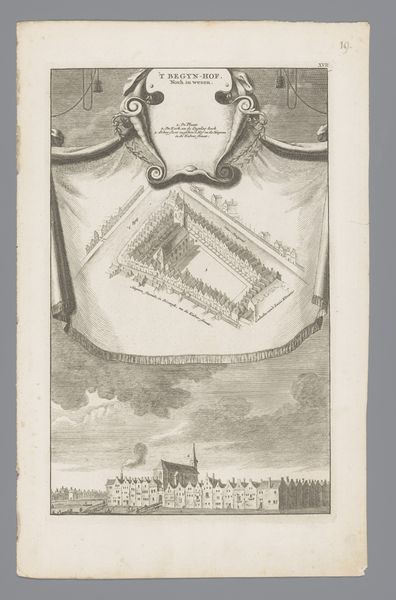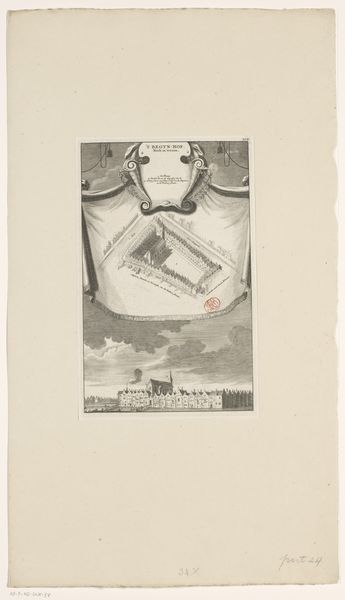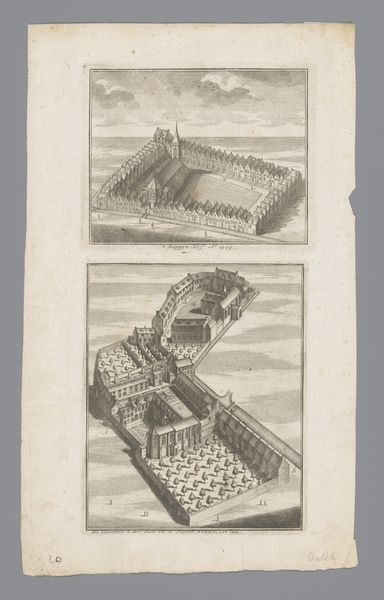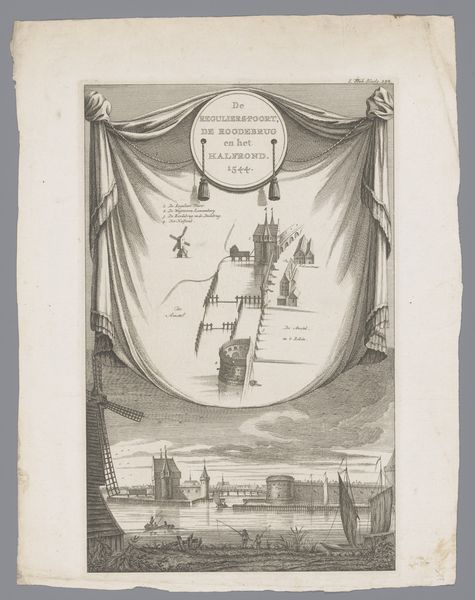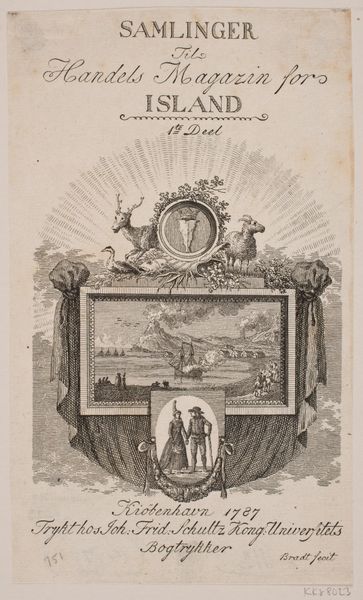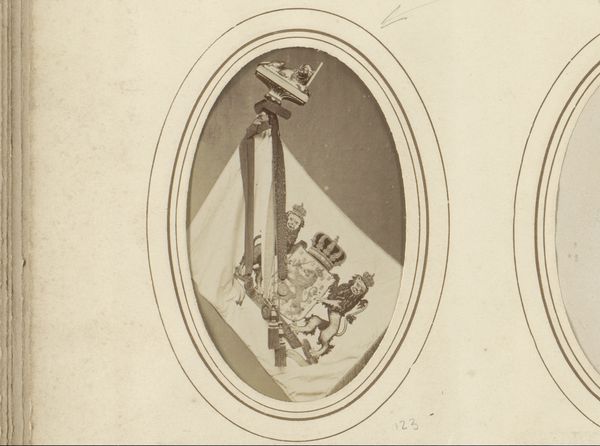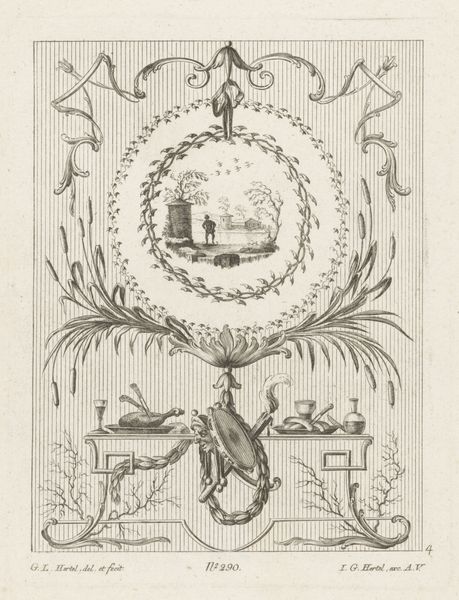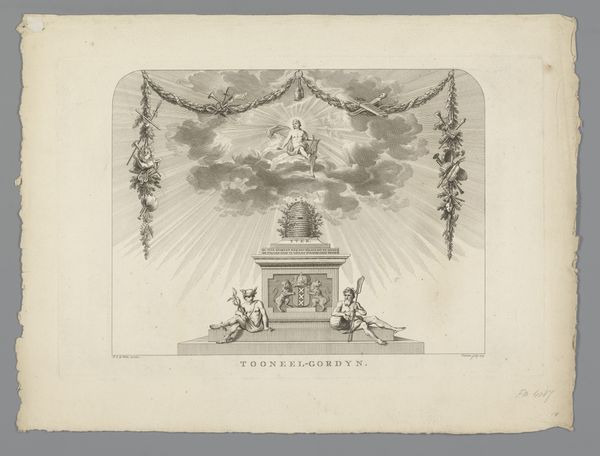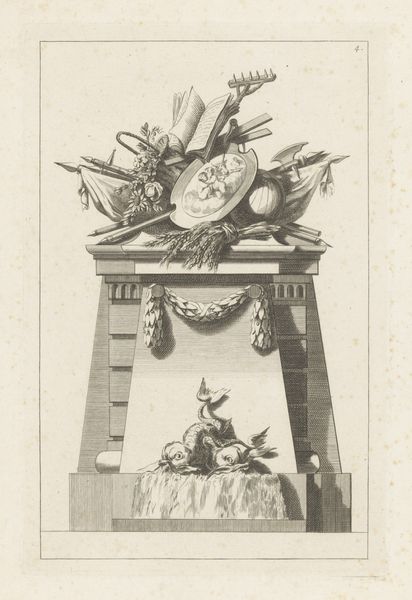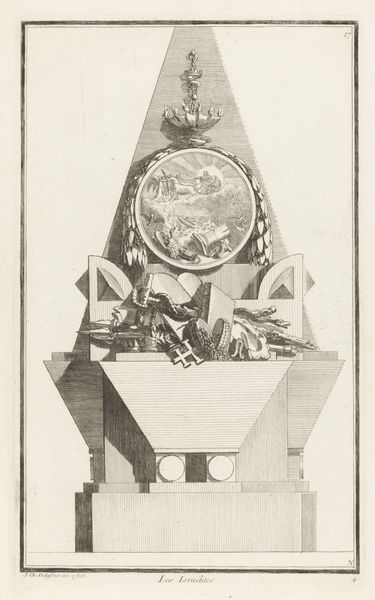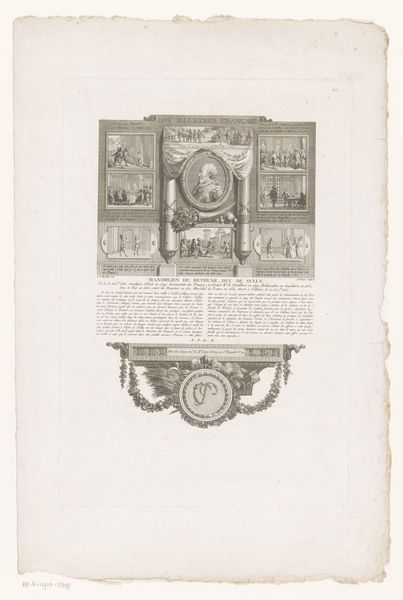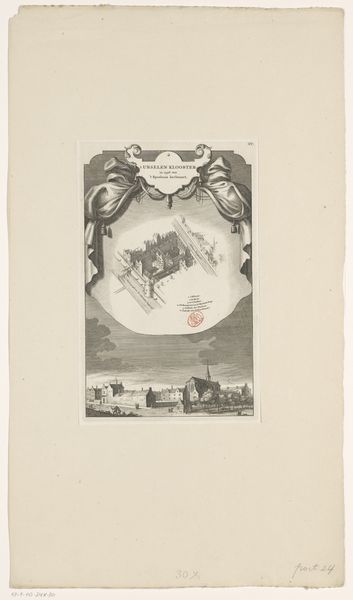
#
comic strip sketch
#
aged paper
#
sketch book
#
traditional media
#
personal sketchbook
#
sketchwork
#
old-timey
#
sketchbook drawing
#
storyboard and sketchbook work
#
cartoon carciture
Dimensions: height 272 mm, width 171 mm
Copyright: Rijks Museum: Open Domain
Curator: This is a detailed rendering of the Begijnhof in Amsterdam, created around 1760. The artist is unknown. Note the contrast between the elevated, almost map-like view of the Begijnhof itself, set within an elaborate cartouche, and the lower scene depicting the surrounding city. Editor: My immediate reaction is that there is a striking juxtaposition of formality and liveliness. The Begijnhof is meticulously rendered, almost sterile in its precision, while the lower cityscape seems more organic, teeming with implied life. The work projects two realities occupying the same space. Curator: Precisely. Look at how the sharp lines and almost architectural draftsmanship delineate the Begijnhof, the clear articulation of form and function. Then, consider the cartouche itself: its curving shapes contrast starkly with the rigidity it contains, offering a pictorial commentary on containment itself. Editor: Yes, that cartouche acts like a symbolic frame—almost as if society needs to tame, enshrine and guard female spirituality, as that's what this space historically represents. I'm also drawn to how the image subtly separates the spiritual space of the Beguines from the secular city. It’s interesting that they appear both visually distinct and connected in this composition. Curator: Interesting interpretation. The composition highlights a dialectical relationship, and one can almost read this relationship into the linework. Consider the texture in the rendering, which offers itself readily for this type of interpretation. Note, too, how tonal consistency across the scenes links them despite differing perspectives and details. Editor: It is undeniable that this piece visually narrates social dynamics of the era. I also observe an emphasis on visual continuity through the lines which symbolically shows interrelationships and influences—a visual reminder of shared histories and perhaps tensions between faith and communal life. Curator: Indeed, beyond the objective depiction of architectural spaces, it serves as an exemplar of rendering structure and order. As such, the work achieves significant aesthetic value. Editor: I see it as a mirror reflecting social narratives and values linked to concepts of community and spiritual contemplation. An invaluable artifact!
Comments
No comments
Be the first to comment and join the conversation on the ultimate creative platform.
